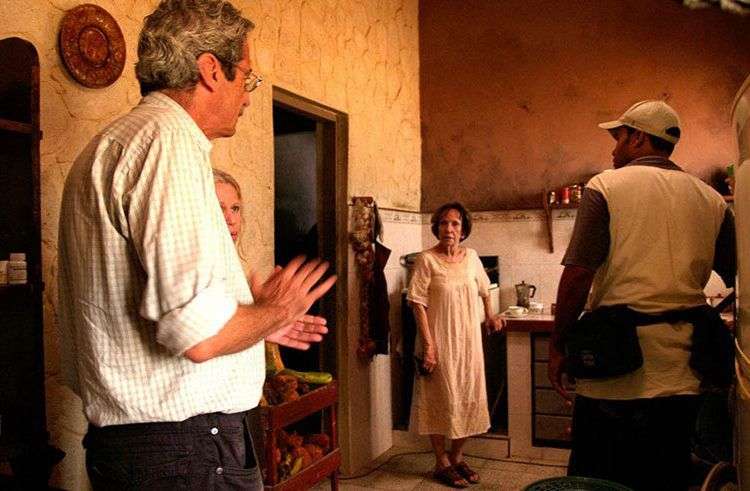The first independent film by Fernando Pérez, La pared de las palabras, is ready after two years production, though there is not stilla specific date for its premiere.
This is his eighth film, but it is certainly the most intimate and heartbreaking among his productions given that it comprises many autobiographical elements permeated by the subjectivity of writer Zuzel Monné, co-scriptwriter for the film.
With an overwhelming emotive content, the film, described by the director of Clandestinos and Suite Habana as a human drama, relies on a harsh and decisive script capable of moving the most reluctant hearts. The story handles emotions spectacularly and the producer reveals his expertise by presenting a genuine piece of auteur cinema.
The plot takes place among desperate screaming and devastating episodes in a mental institution. Fernando Pérez walked into the complex world of psychiatric disorders through a thorough research that helped him reaffirm one of the lines in the film: “the fact that everything is upside-down doesn’t imply there is not order at all”.
In about one hour and 45 minutes, the film, unfamiliar in the contemporary visual arts, maintains its capacity to get to people’s hearts at all times. Love and motherly instincts, understanding, resignation, and hope, work as unmistakable aspects in the story of a dysfunctional family in Cuba today due to a neurodegenerative disease of one of the members of the family.
Luis, the main character, is sick. He doesn’t speak nor move as he would like to, so it is impossible to know what’s on his mind. Not even his mother is able to figure out his longings and sorrows; therefore she is not certain about how much of her love he can actually feel. He is confined to a mental institution due to his condition. There he interacts with other people with similar limitations and expresses, as any other human being, his desire to break barriers and be freed from his natural prison.
This film is metaphorical, symbolic, hyper-textual, painful and tender. In it Fernando goes back to first plains that characterize him as the visual poet he has proven to be. Once again he gives us unforgettable images of Havana, of the intrinsic beauty of its ruins, of the cityof his dreams and nightmares which collapses as walls and words fall down, always bathing in the sea. And there is the sea again, this time in Santa Fe, where a considerable part of the film takes place.
La pared de las palabras, by Fernando Pérez. Isabel Santos and Jorge Perugorría play the leading characters.
La pared de laspalabras deals with daily life, criticizes red tape and real crazy people that build walls instead of wordsblocking other people’s aspirations and fantasies. It analyzes the human condition and invites spectators to be tolerant, to communicate, and respect diversity and freedom of expression and family union. It represents contention walls as the board of emotions of people like Luis, who cannot express the richness of their inner worlds. The film portrays another dimension where “words are not needed”.
As said by the director of the movie, it “tackles that harsh and difficult road not only through Luis, but also through his family and his social environment. Sometimes, for “normal” human beings it is frequently harder to understand words, signs, waves, looks that get lost with the routine”.
In this piece, Fernando was joined by his indispensable: Raúl Pérez Uretain photography direction and Yulia Yip in editing and music was once more in charge of Edesio Alejandro. He trusted the leading female character to his dear Isabel Santos to whom he set a new challenge:to dive in the sea, just as he once made her fly over the city in a globe for La vida es silbar.
This was his first time working with Jorge Perugorría, who assumed the challenge of interpreting a disabled person that only communicates through difficult gestures. The dysfunctional family is fulfilled with Veronica Lynn, the grandmother, and Carlos Enrique Almirante, Luis’ brother. Laura de la Uz makes a masterly interpretation of one of the nurses at the mental institution and she leaves a lot to the spectators’ imagination with her obsessive remarks about politics. Mar de noche, an enigmatic and seductive piece by Yoan Capote, works as another character in the film: “it can be many things, it depends on whose perspective it is looked at”, just as this film can represent a wall for some people and more than words for others.










